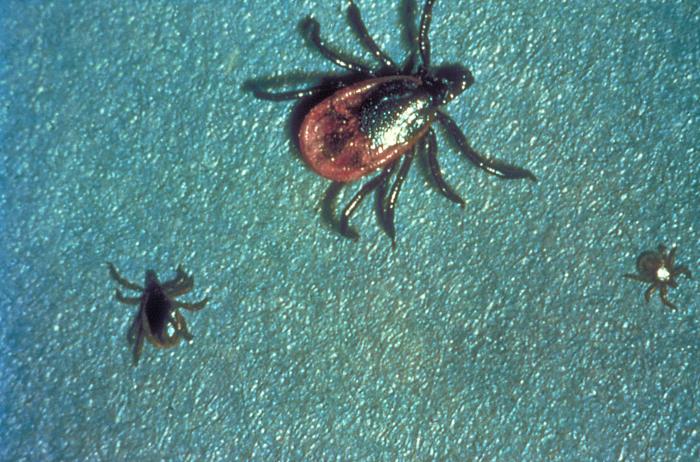With Lyme disease cases increasing in Washington County, U.S. Senator Kirsten Gillibrand visited Juckett Park in Washington County to announce the Trump Administration has begun to establish the Tick-Borne Disease Working Group, a key provision in her Lyme and Tick-Borne Disease Prevention, Education, and Research Act, which became law as a part of the 21st Century Cures Act in December 2016.

The Tick-Borne Disease Working Group will review all federal activities related to tick-borne diseases, including Lyme disease, and will function as a Federal Advisory Committee to the Department of Health and Human Services. Senator Gillibrand also urged the Trump Administration to ensure that the Working Group includes adequate representation by patients, their families, and advocacy organizations, as required by the law. The Working Group will improve federal coordination on urgently needed research for prevention, diagnosis and treatments for Lyme and other tick-borne diseases.
Lyme disease is the most commonly reported vector-borne illness in the U.S., and New York is among the states most significantly affected by this disease. In 2015, New York reported 3,252 confirmed cases of Lyme disease to the Centers for Disease Control and Prevention (CDC). However, the CDC estimates that the actual number of diagnosed cases is as many as ten times the number of cases that states report to the CDC. The New York State Department of Health estimates that Washington County had 75 cases of Lyme disease in 2015.
Find a selection of New York City Passes for all budget on Viator
“Families in Washington County should be able to spend time outdoors without having to worry about being bitten by ticks and contracting Lyme disease,” said Senator Gillibrand. “The call for nominations to the Tick-Borne Disease Working Group by the Department of Health and Human Services is a step in the right direction toward better federal coordination to address tick-borne diseases. The Trump Administration must make sure that the Working Group reflects the voices of those most directly affected by Lyme and other tick-borne diseases – patients and their families. I will continue to do everything I can to help fight Lyme disease in New York, and I urge the Trump administration to take this problem seriously and carry out its responsibilities under the Lyme disease provisions of the 21st Century Cures Act.”
- Powassan and Lyme disease: Chuck Schumer calls for Feds to ‘step up their game’
- Lyme: Q & A with Paul Auwaerter, MD
- Lyme advocate discusses CDC MMWR Chronic Lyme articlePowassan virus: The spread is inevitable
According to the CDC, between 2005 and 2015, there were 41,229 reported cases of Lyme disease in New York, one of the most heavily affected states in the country. 95 percent of confirmed Lyme disease cases in 2015 were reported from just fourteen states, including New York.
In April, Senator Gillibrand, along with Senator Richard Blumenthal (D-CT), wrote a letter to the Secretary of Health and Human Services (HHS) requesting an update on the Trump Administration’s efforts to implement the federal Tick-Borne Diseases Working Group, which is one of the requirements in Gillibrand’s Lyme and Tick-Borne Disease Prevention, Education, and Research Act. The Working Group will ensure coordination among federal agencies and with researchers, health care providers, and patients in addressing tick-borne illnesses. The Working Group will comprise representatives from federal agencies, including the Centers for Disease Control and Prevention, the National Institutes of Health, and the Food and Drug Administration, as well as non-federal members, such as medical providers with experience in diagnosing and treating tick-borne diseases, scientists or researchers with expertise in tick-borne diseases, patients and their family members, and non-profit organizations that advocate for patients. In addition, the Working Group will submit a report to Congress every two years and will publish the report on the U.S. Department of Health and Human Services’ website regarding the Working Group’s recommendations for improving the federal response to addressing tick-borne diseases.
The Trump Administration also recently proposed a federal budget that would cut NIH funding by 22 percent, which could decrease critical Lyme disease research for prevention, diagnosis, and treatment.



One thought on “Lyme disease: Senator Kirsten Gillibrand visits Washington County”